Last Updated on January 23, 2024
I haven’t talked a lot about fast fashion on this blog. I would like to change that. I had an 18 piece wardrobe experiment, but I’ve been long overdue for an update.
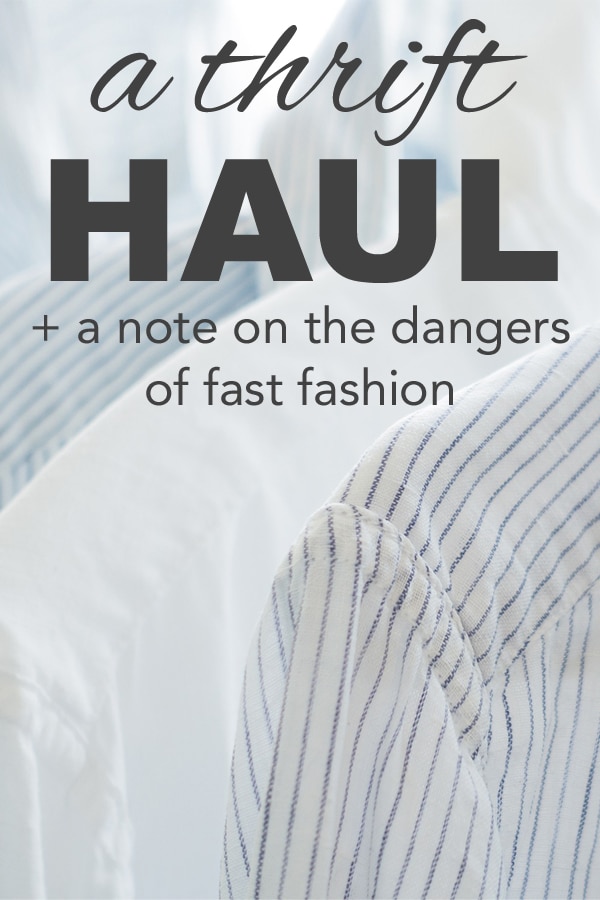
A wardrobe update is coming soon (I promise!), but I’m working on refining my style right now. Hopefully, I’ll be coming out with a full post soon. In the meantime, I hope you enjoy my latest trip the thrift store!
I got a lot of really great basics, that I’m super excited to share with you. I think buying second hand is the most sustainable way to participate in the fashion industry.
The fashion industry is enormous! It is worth more than 2.5 trillion dollars, and it is responsible for so much waste. Retailers now have 52 micro-seasons. Basically a season each week.
The goal is to make you feel like you’re out of fashion the moment you wear something. They want to consistently make you feel inadequate. To make you feel like you’re less of a person because you’re not “hip.”
I watched the documentary the true cost and it enlightened so many things for me. I would highly recommend it. It is on Netflix now. I don’t particularly enjoy watching documentaries of this nature because they can depress me for days.
If you feel similarly, I have outlined quite a bit of what the documentary talks about. We can solve this by shopping second hand first, by supporting sustainable brands, and finding contentment in what we already own.
We can help stop this madness by learning small sewing techniques. Just being able to sew on a button. Or learning where you local tailor is so they can sew on a button!
We need to put value back into our belongings. We need to realize, that what we own is valuable. Everything we have comes at a cost. Not just a monetary cost to us, but at a cost to others as well.
“The True Cost” is a documentary that examines the impact fashion has on people and the planet.
A friend recommended I watch it. I expected a barrage of interesting facts and an in-depth look into the fashion process. I did not prepare myself for the onslaught of tears and anger I felt.
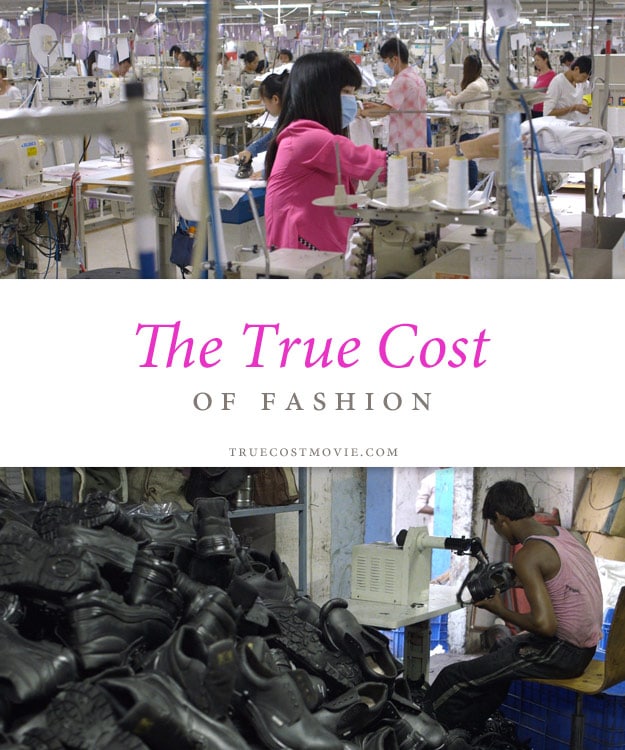
None of the pictures in this post are mine. They are all credited to The True Cost.
It’s a very powerful film, but something you should watch. You can rent or buy it here. It’s difficult seeing what we’ve created; what I’ve created.
Every time we buy one of these products we’re saying this is OK. We’re saying, please make more of this. Please, continue.
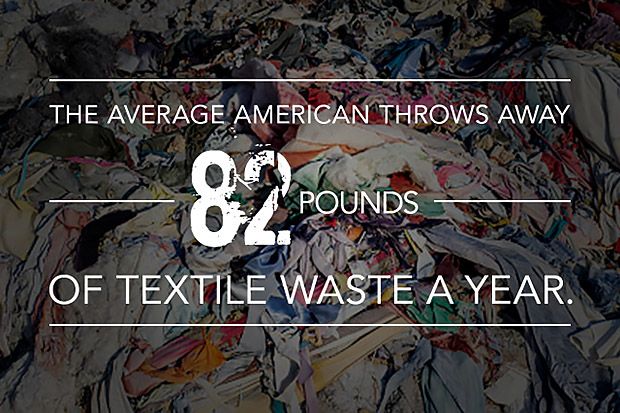
People are suffering and dying in every chain of the process. Monsanto sells GMO cotton seeds to poor farmers. As they try to pay it back, they’re forced to buy new patented seeds and pesticides each year causing them to go deeper and deeper in debt.
The suicide rate is the highest in the world. The dirt has become so full of pesticides and chemicals the cotton plants can’t grow. The pesticides have even affected the population. 80% of the babies in the region are born with severe physical and mental disabilities. Most families don’t have the money to treat them.
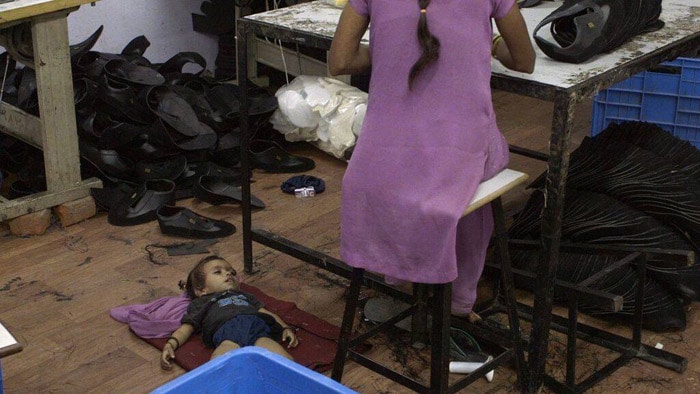
The cotton is laced with pesticides and chemicals, then it goes through a larger chemical process to turn it into cheap fabric. The fabric is then sewn by slave labor in hot, unventilated warehouses causing fires, sickness, and even death.
The leftover fabric is discarded to sit in a landfill, which they don’t have the proper infrastructure to maintain. When it rains, the saturated fabric drips all of those chemicals into drinking water, the ocean, and onto the soil. It is making large areas uninhabitable.
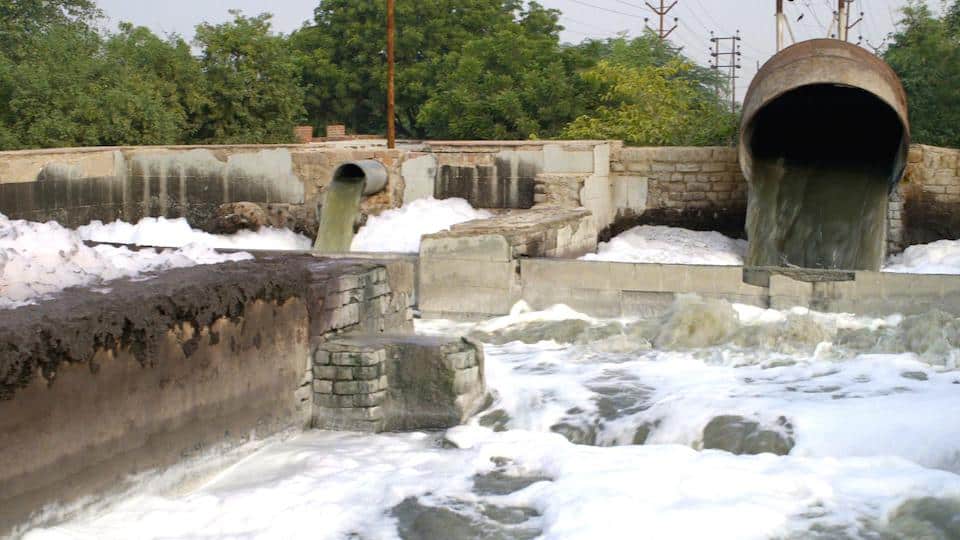
Polluted water from the chemicals involved in the fashion industry.

Scraps of clothes sitting in landfills.
I assumed culprits were low-end quality stores like H&M and Forever 21. But, no. It’s high-end designers too like my favorite designer Lacoste. Let’s just say I will never buy anything Lacoste ever again.
I buy mostly second hand. But if I have to buy something new, I will only shop sustainable. Here’s a list of some awesome sustainable brands.
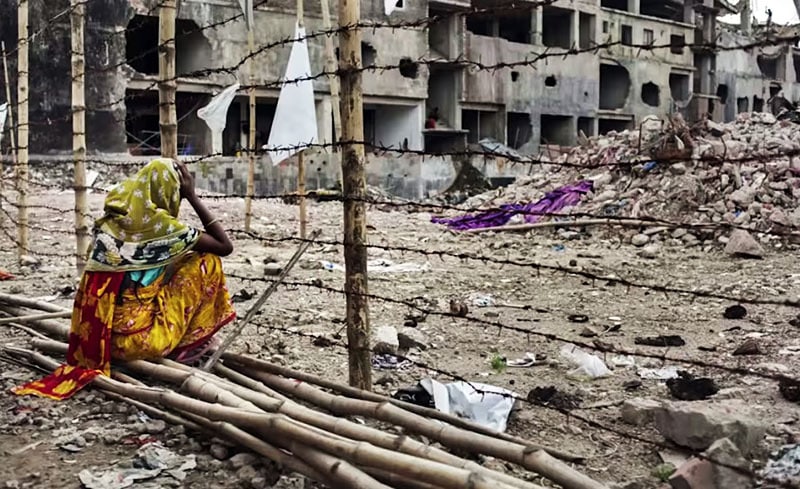

The garment factory collapse killing more than a thousand factory workers in Bangladesh.
The good news is, we can easily fix this problem! We need raise awareness on the dangers of fast fashion and make thrifting and consignment totally normal. We should always think second hand first!
Do you shop second hand? Are there any sustainable brands you like and support?


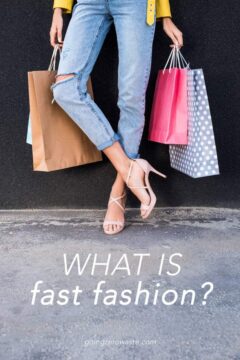
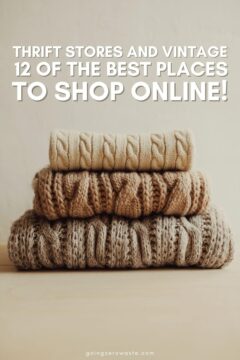








Excellent post! I will definitely add the documentary to my list. I live in Philadelphia where most of my friends shop vintage/thrift for the simple fact that as artists, we can’t afford new stuff. So it’s been a delight to see how seamlessly that element of my life fit into my new goal of living Zero Waste. Also, I have two inspiring female friends who have started amazing and sustainable clothing lines here in Philly: https://www.shop-pearce.com/ (Allison Pearce is the designer and founder. She also designs the digital shorts for SNL) and https://www.detwawoven.com/home (Rhiannon Laymond is the founder of this boutique shop and is a choreographer in the Philly area.) Both women are such incredible inspirations and are both coincidentally working for me on my next music video for a local punk rock band. Which will be a totally Zero Waste film set. Thank you for all your hard work and know you are inspiring a group of artists out East to live and create in the ZW philosophy.
Excellent post. Thank you for outlining so I don’t have to watch. I shop and sell second hand, have clothing swaps with coworkers and friends, love handmedowns for my boys. Microseasons. Ridiculous.
I wish Americans would refer to "sweaters" as what they are – cardigans. Otherwise there is pullovers or jumpers. "Sweaters" means nothing to non-Americans.
This was a really great post and I turned around and watched the documentary. I have been looking for brands that are fair trade since the documentary and I found this list so far. http://fairtradeusa.org/apparel-homegoods/purchase
I am a new reader, and I have been really inspired by your blog. I live in rural Alabama, so things like sustainable fashion and reusable grocery bags are not the norm, and I have learned so much by reading your blog! Last week, I bought my groceries using reusable bags all the while suffering strange looks. This week, I cleaned out my closet and have purchased some used clothes from sustainable brands on eBay (our thrift stores here just aren’t that great). I have found some great brands to search for including: PrAna, Patagonia, Eileen Fisher, People Tree (UK), and Fat Face (UK). Purchasing them used also makes them much more affordable! I have never been one to purchase a ton of clothes I don’t wear, but I think buying from more sustainable brands or buying used is a great way to say "no" to the fast fashion industry. Thank you for your post!
I have a hard time finding good quality clothing at thrift stores near me (Long Island, NY) so I’ve been doing my best to find sustainable and fair trade fashion companies to buy new clothing from. So far, I really like Mata Traders and Tonle Design. I haven’t found a good source for sustainable but not crazy expensive business casual clothes though. Do you have any recommendations?
I am reading your blog for some times now. Very good post. If I may say so, we have to be very careful with brands that label themselves as " sustainable" while still manufacturing overseas. I encourage everyone interested in ethical fashion to read "The China Price: The True Cost of Chinese Competitive Advantage". It explains very clearly, that in the actual system, there is NO way to accurately trace the original manufacture of garments. So while some companies have established " decent" standards in their factories overseas, there is no way for them to guarantee the products are indeed manufactured in this very factory.
I mainly shop second hand, Ebay being my main source as I haven’t found any thrift store I like in the area I lived. (I moved there a year ago). I also have decided to give it a go as making my own clothes. I love simple cuts and makes it easier. I also have found that it is easier to find yarn/fabric produce ethically in nearby countries than clothes themselves.
Thanks for taking the time to write on those topics and sharing so much, your blog is a great inspiration.
Bests,
Steph
hmmmm. thats very interesting. I think it’s really important to have a very high level of trust with the manufacturer of your clothing. I personallh always try to buy made in USA if I’m purchasing something new.
I love thred up for thrifted clothes, also tradsey when i want something a little more posh. As far as sustainable goes im falling in love with amour vert.
I love Elegantees, Siizu, Cuyana and Purple Impressions for sustainable and fair trade clothing!
Interesting article. I have been reading up on fast fashion and appreciate your post. This reminds me of what I read in "The Best Places to Thrift in NYC" (/"http://sustainnyc.bestonlineblogs.com/2019/11/04/the-best-places-to-thrift-in-nyc/)